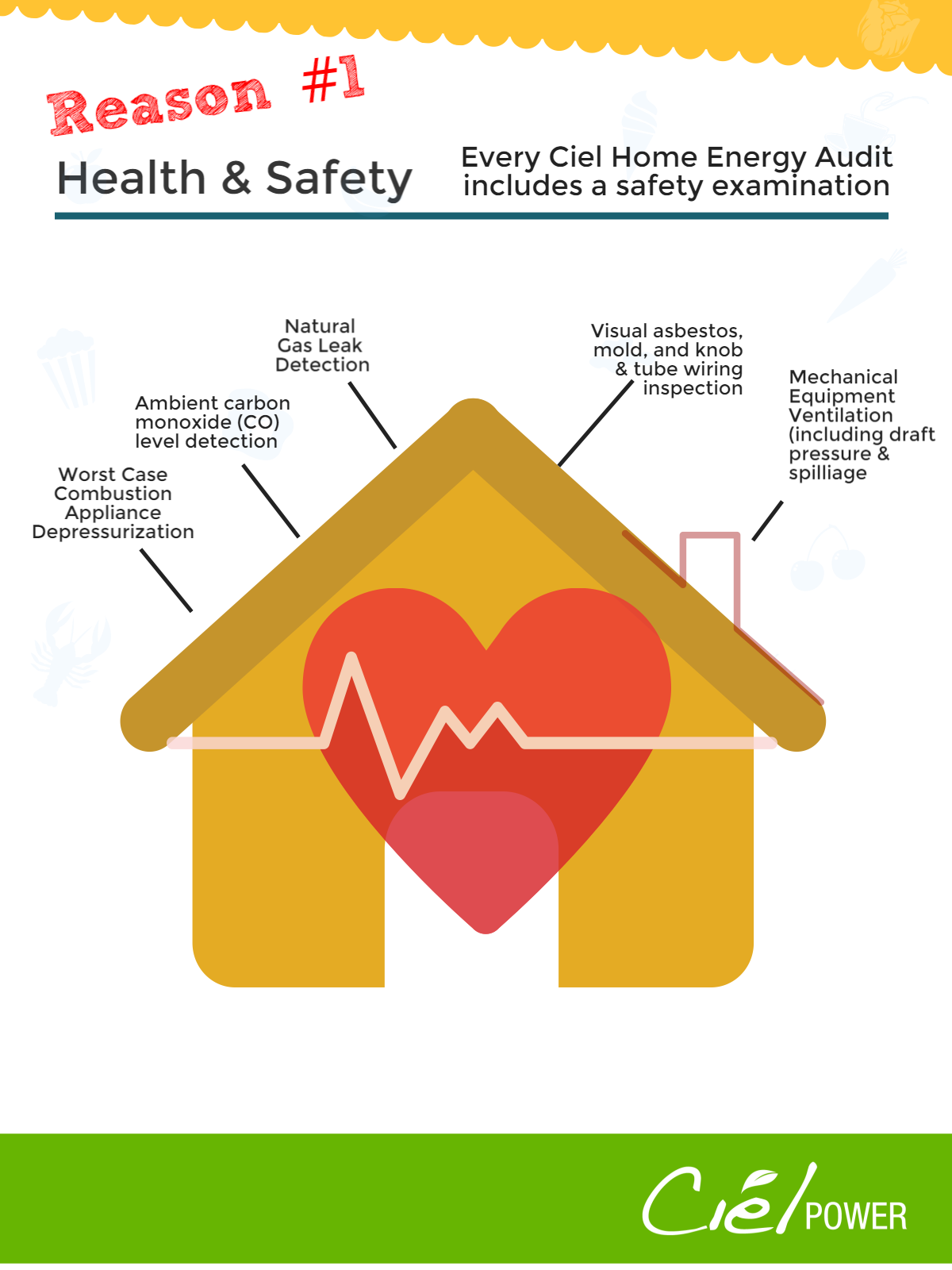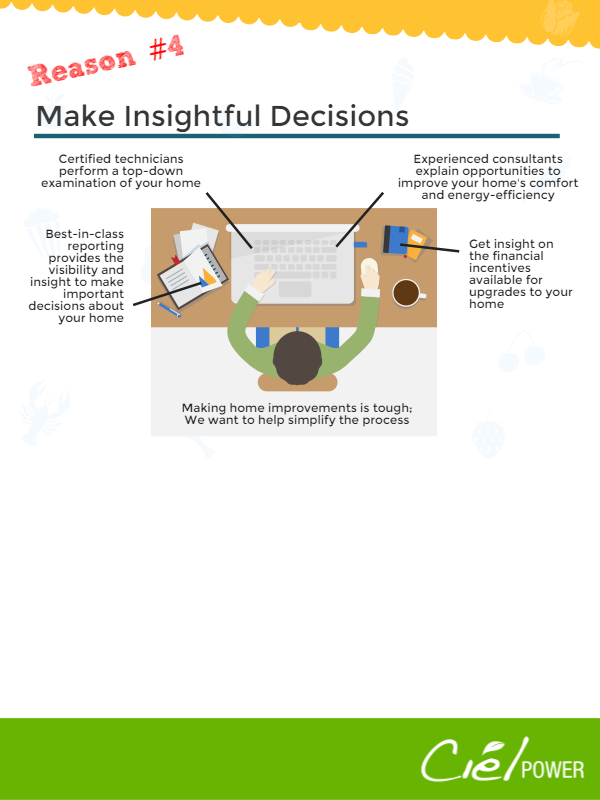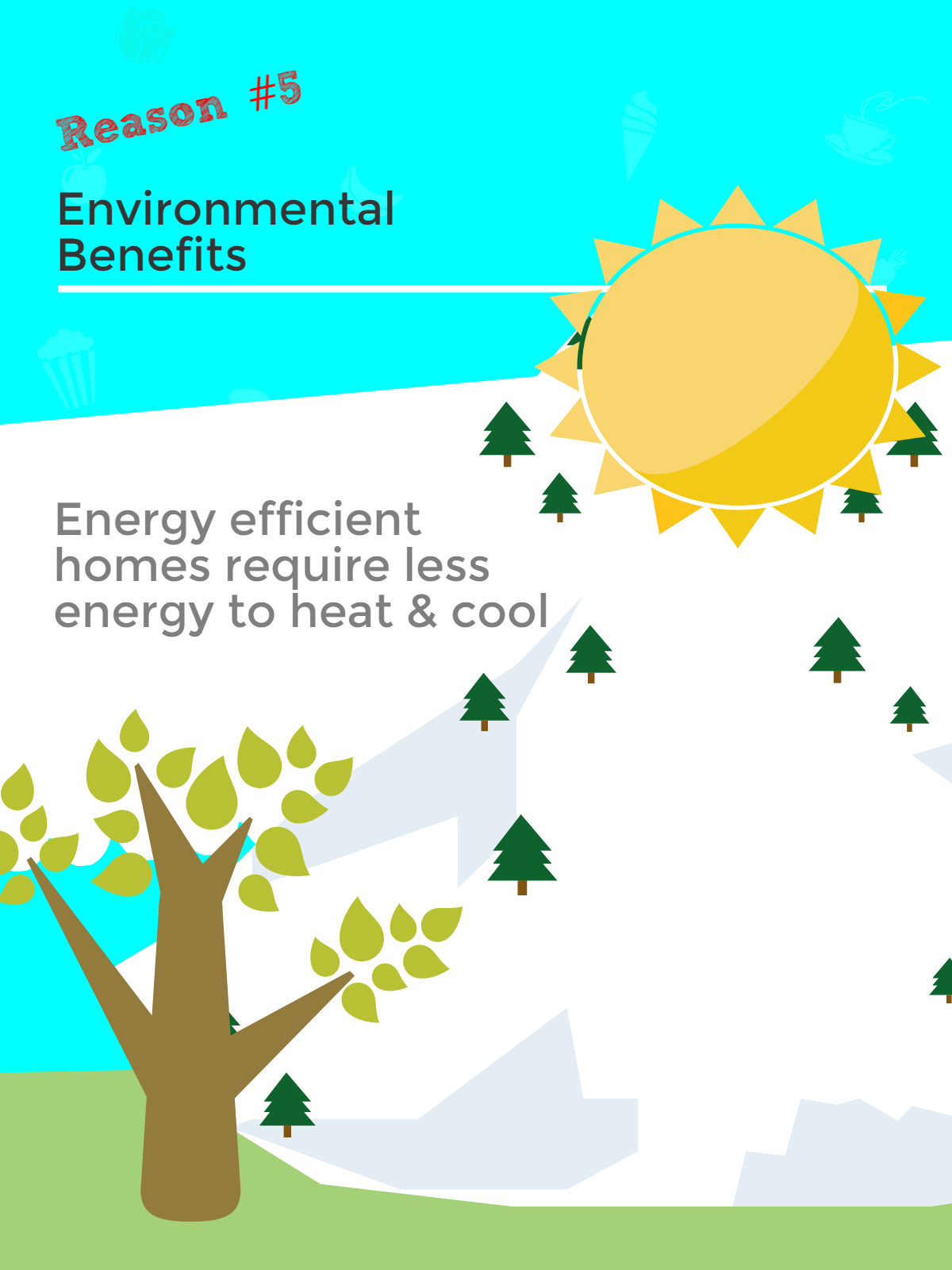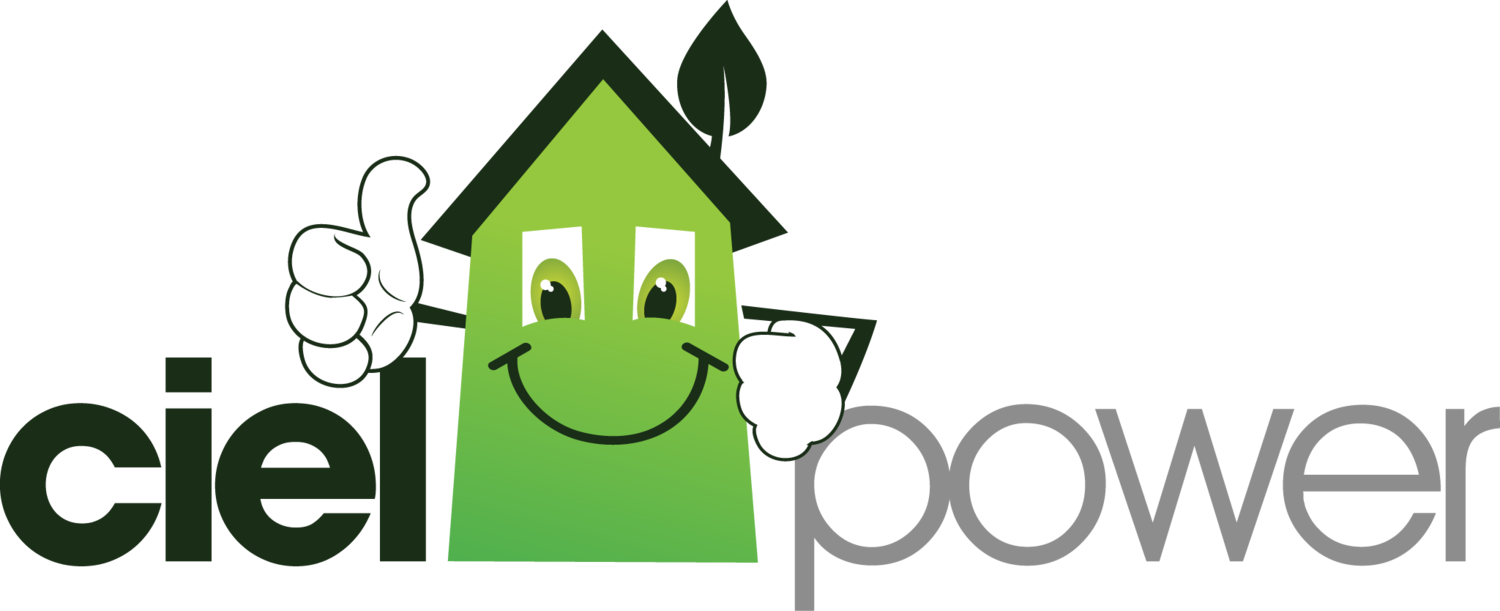Top 5 Reasons To Get a Home Energy Audit






A Ciel Home Energy Audit may only take a few hours, but this first step towards additional comfort, energy-efficiency, and lower operating costs make it rival those of almost any other home improvement pursuit. From Martha Stewart, to Consumer Reports magazine and the US Department of Energy, a home energy audit is on the short list of every industry professional.
10 Surefire Tips To Improve the Comfort and Energy Efficiency of Your Home
From staying warm and comfortable on cold winter nights to managing energy costs as part of a household budget, these professional tips are guaranteed to bring comfort and energy-efficiency to your home:
From staying warm and comfortable on cold winter nights to managing energy costs as part of a household budget, these professional tips are guaranteed to bring comfort and energy-efficiency to your home:
1) Air-Sealing
Often overlooked, air-sealing is the most important part of a properly insulated home. Seal plumbing and electrical penetrations, top plates, vent stacks, and any other penetrations that might allow conditioned air to escape from the home.
2) Prioritize Your Attic
If you only insulate one part of your home, make the attic your priority. Proper attic insulation will make a noticeable difference in the comfort level of your home during winter and summer months.
3) Don't Forget The Basement
During cold winter months, convection causes cold damp air to be pulled in through the lower level of your home. Properly insulating the rim joist of your home will slow the convection process and improve comfort and indoor air quality.
4) Exterior Walls
Exterior walls represent the largest volume of square footage exposed to the elements in most homes. Properly insulating the exterior walls of your home will yield a tremendous comfort and efficiency benefit. Choose a professional experienced with working with your siding type.
5) Choose Materials Wisely
Selecting insulation materials can be a daunting task. Seek out products containing natural and recycled ingredients. Products that offer higher R-values per inch as well as resistance to air movement are preferable.
6) Insulate To Proper Levels
Preferred insulation levels vary throughout the country. In the northeast, the Building Performance Institute recommends R-50 on the attic flat, R-38 on the attic slope, and R-13 in exterior walls.
7) Safety First
Before air sealing and insulating your home, have a certified professional examine the combustion appliances in your home (heating system, hot water heater, and stove) to ensure they are exhausting properly and CO levels are within proper ranges.
8) The Construction of Your Home
Check out the construction of your home before beginning an insulation project. Older homes often have "balloon framing" which means a dime dropped from the attic will often land on the basement floor. Block off these voids to prevent insulation from escaping its intended placement.
9) Be Aware of Potential Hazards
Examine the different systems in your home to determine if insulation may cause an adverse effect. Do you see "knob and tube" type wiring? Don't insulate it. Is your furnace using a wall cavity as a supply air duct? Don't insulate the cavity. Closely examine the areas you are insulating to ensure there are no unwanted consequences to your insulation project.
10) Recessed Lighting
Your recessed lighting is likely acting as a chimney, providing a conduit for conditioned air in your home to escape to the outdoors. There are a variety of products on the market specifically designed to block this type of air transfer. Consider installing these products during your insulation project. Other sources include upgrading housings to newer ICAT (insulation contact air tight) versions, or installing LED retrofit kits to slow the transfer of air. Don't apply insulation in direct contact with recessed lights unless your fixture is IC (insulation contact) rated.
Conclusion
Hopefully these 10 tips have inspired you to upgrade your home's insulation. Remember to properly air-seal beneath any newly installed insulation for maximum benefit.
Have you utilized any of these strategies? Let us know how it went in the comment section below!
Need help with your home? Our Home Energy Audit includes a comprehensive examination of insulation levels in your home along with recommendations and available incentives.
Green Is In The Details
Sustainability in historic homes; Ciel partners with Architect and Sustainability Consultant Keith Hone to deliver today's comfort and energy-efficiency standards to this exquisite historic property in Tewksbury, New Jersey.
Located in central New Jersey, Tewksbury Township is famous for its small-town sleepy vibe that belies its A-list residents which include many of New Jersey's most prominent families. Within close proximity to the township's famous General Store, this unique historic property is located in the heart of this idyllic township.
The property is comprised of an intimate collection of buildings that offer a relaxed and historic setting overlooking the surrounding countryside. The main house has served as the venue for a number of equestrian events and has recently undergone an extensive renovation focused on increasing the comfort and energy-efficiency of the stately property.
The owners of this exquisite property teamed up with Keith Hone of Hone+Associates, a firm that provides architectural design, sustainability consulting, and project representation services. Together they undertook efforts to understand how each of the structures on the property consumed energy and used this information to create a detailed master plan designed to curtail energy consumption across all of the structures on the property.
Like most historic homes, the main house acted like a sieve, letting air and heat easily pass through its poorly insulated walls and attic areas. Ciel technicians teamed up with Hone and his team in an effort to diagnose problem areas, create a master-plan, and to undertake the sustainable renovation work in this historic home.
"In our view, a building should reflect the full context in which the project is built:" says Keith Hone, an architectural design and sustainability consultant. "It should reveal the client's mission; it should promote health in all the systems in which it participates; and it should elicit joy."
In addition to putting in spray foam and fiberglass insulation in the attic areas, the Ciel team carefully opened up the historic siding on the home to insulate each wall cavity with blown-in cellulose insulation. As the project unfolded, the aging foundation of the home was reinforced or replaced in preparation for the newly excavated crawlspaces to be encapsulated and insulated.
Every detail of this home seems to spark lively stories about childhood and family. In the early morning hours you may catch a member of the staff sipping coffee in the kitchen warmed by an old stove. The staff here spans multiple generations and fizzes with the same life and personality as the rest of the property.
"We saw a lot of love at this home." said Scott Fischer of Ciel Power. "Our efforts here should ensure that the family has rooms a bit warmer, a hearth that's a bit cozier, and an environment that's a bit cleaner for generations to come."
““We believe strongly that, at a minimum, our activities must greatly reduce the impact we have on the environment, and we aspire to help lead our industry toward solutions that not only do less harm, but also promote health. At the core of the process that will allow us to move from sustainability to regeneration is an
integrative approach to design that honors systems thinking.”
”We recognize and appreciate that money is also a resource. Our experience has been that environmentally responsible building and site development can significantly reduce operating expenses with minimal or no additional capital cost. We are committed to providing our clients with accurate and current information so that they can properly evaluate the value of our solutions.””









